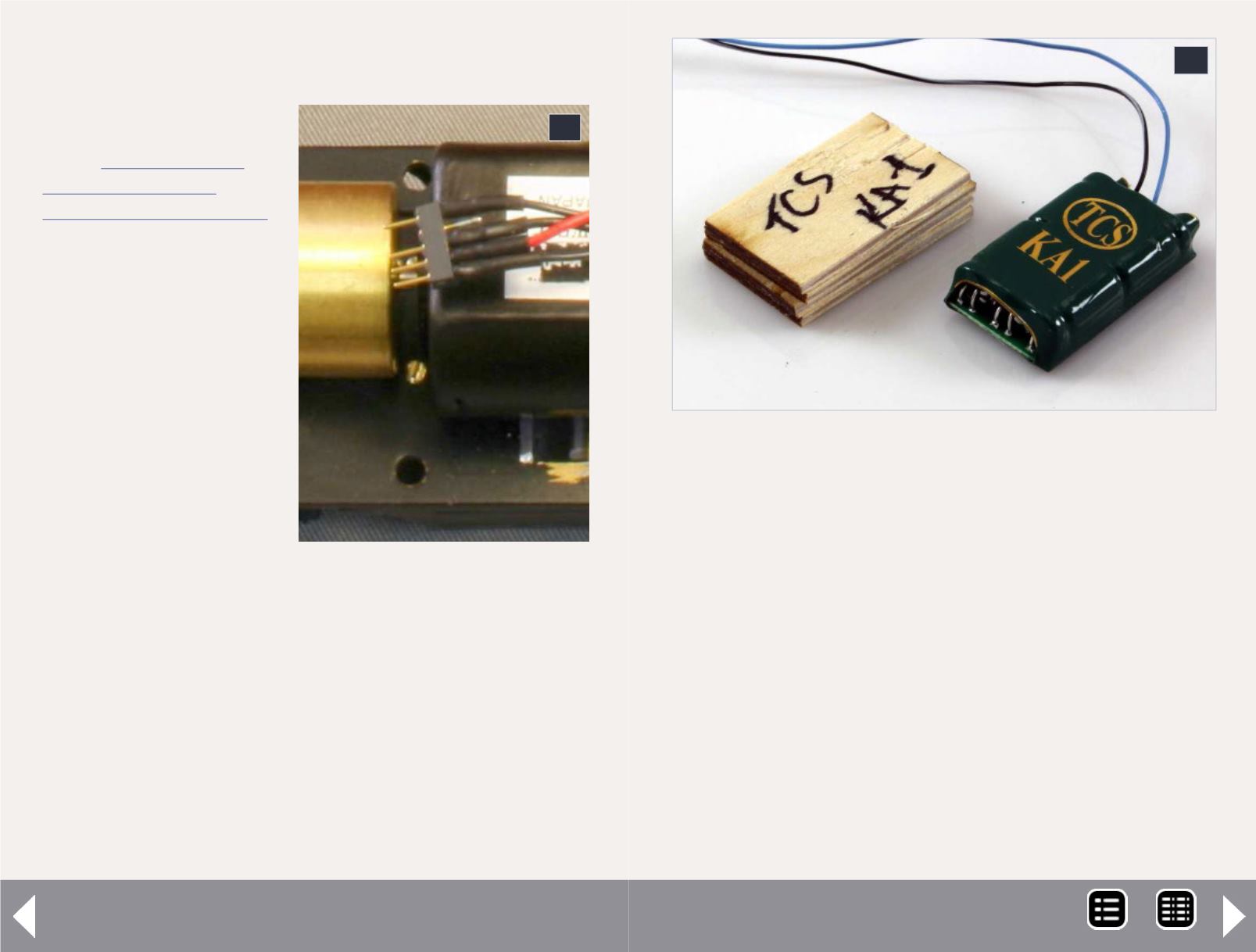
DCC Impulses Column - 8
They are much less expensive than buying ready-made connec-
tors. The big trick is insulating them and marking them.
Here’s how I insulate
them. I use 3/64" shrink
tubing
If I have a lot of pins, the
shrink gets too tight. Then
I put the shrink on EVERY-
OTHER pin. Then I put a
larger shrink tubing over
the entire connector. That
way all pins are insulated
from each other and the
total package is insulated
from shorts to the frame,
and other conductive parts.
Finding space
The best way, in my opin-
ion, to find whether your
installation will work before
you buy the decoders and
speakers, is to try it.
I use the data from manu-
facturers' web sites to make wood mockups of the decoders and
trial fit them before hand. I make the mock-ups a bit oversized to
allow for shrink tubing hang-over and clearance for wires.
14: This photo shows a connec-
tor with 3/64"shrink tubing on
the connections, ready for an
overall sleeve to insulate and
stabilize the entire connector.
14
15: This photo shows the mock-up I made for a TCS KA-1 and
the actual part after I got it. I was able to verify that the KA1
would fit before I bought it with this mock-up.
15
Glue it fast
The wood mock-up discussed in “Finding space” was built from
bits of wood from a Fast-Tracks project, assembled with Pacer
Formula 560 Canopy Glue.
I don’t like this glue, I LOVE it.
It glues almost everything. It dries clear, so you can even use
it to make windows. It is fantastic for installing glazing. It even
works as an incredibly fast drying wood glue. I’ve built entire
loading docks in a very few minutes, assembling the parts on
waxed paper! Even though it will glue almost anything, it works
best on the more porous surfaces, like wood and plastic.
MRH-Jun 2013


